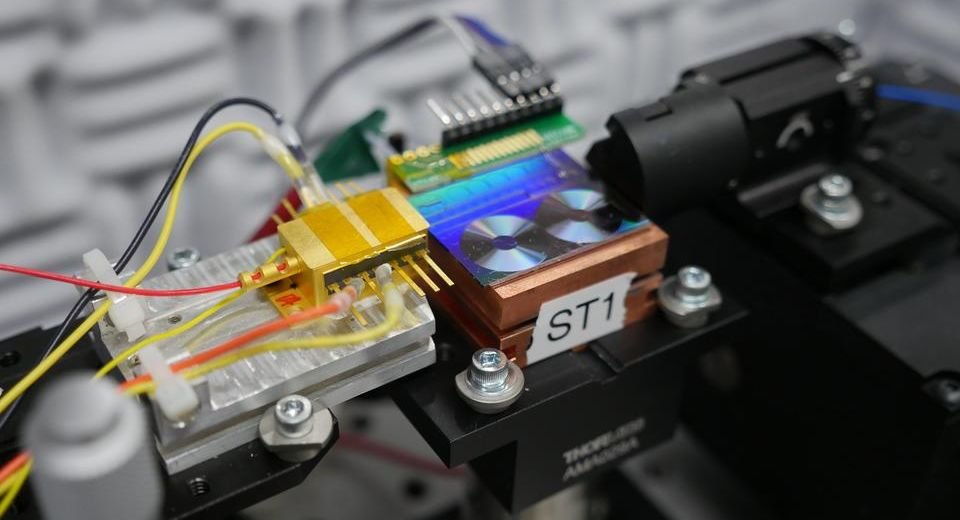HQ Team
March 7, 2024: A chip, developed by the US-based National Institute of Standards and Technology, to convert light into microwaves, can improve the quality of high-precision timing and communication systems, according to a statement.
The timing technology and compact chip improve the quality of phone and internet connections, and the accuracy of radar, and sensing systems. It can help radar technicians, astronomers, and environmental scientists, increase their sensitivity and ability to measure new things.
The chip contracts “timing jitter” — similar to when a musician is trying to keep a steady beat in music the timing of these signals can sometimes waver a bit.
The researchers have shrunk these timing wavers to a very small fraction of a second — 15 femtoseconds to be exact, a big improvement over traditional microwave sources.
The lowering of wavers in the signals makes it much more stable and precise in ways that could increase radar sensitivity, the accuracy of analogue-to-digital converters and the clarity of astronomical images captured by groups of telescopes.
‘Shrinking the size’
“The current technology takes several labs and many PhDs to make microwave signals happen,” said Frank Quinlan, NIST physical scientist. “A lot of what this research is about is how we utilize the advantages of optical signals by shrinking the size of components and making everything more accessible.”
Researchers have taken what was once a tabletop-size system and shrunken much of it into a compact chip — about the same size as a digital camera memory card.
Reducing timing jitter on a small scale reduces power usage and makes it more usable in everyday devices. Right now, several of the components for this technology are located outside of the chip, as researchers test their effectiveness.
The ultimate goal of this project is to integrate all the different parts, such as lasers, modulators, detectors and optical amplifiers, onto a single chip, the researchers wrote in the journal Nature.
“The goal is to make all these parts work together effectively on a single platform, which would greatly reduce the loss of signals and remove the need for extra technology,” said Quinlan. “Phase one of this project was to show that all these individual pieces work together. Phase two is putting them together on the chip.”
Precise timing
The chip could be easily incorporated into small devices without requiring lots of energy and specialised training.
Multiple phone calls can be carried over the network simultaneously without experiencing significant delays or drops.
In radar, which is used for detecting objects like aeroplanes and weather patterns, precise timing is crucial for accurately measuring how long it takes for signals to bounce back.
Researchers from the University of Colorado Boulder, the NASA Jet Propulsion Laboratory, the California Institute of Technology, the University of California Santa Barbara, the University of Virginia, and Yale University came together to work on how they can harness light and microwaves for practical applications.
“I like to compare our research to a construction project. There’s a lot of moving parts, and you need to make sure everyone is coordinated so the plumber and electrician are showing up at the right time in the project,” said Quinlan. “We all work together really well to keep things moving forward.”


